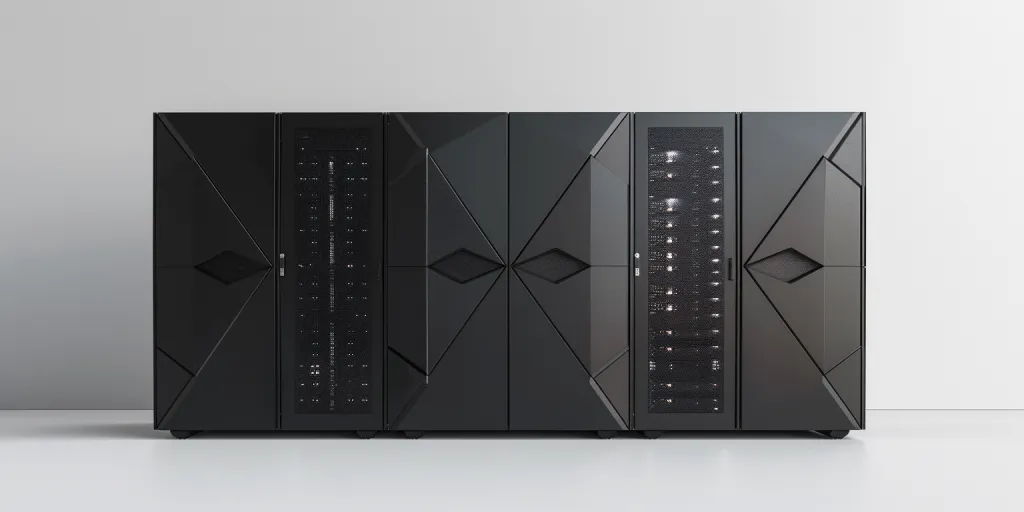In the realm of consumer electronics, the evolution of storage solutions has been both rapid and revolutionary, leading us to the doorstep of an efficient and scalable option: Network Access Storage (NAS). This guide aims to demystify NAS, breaking down its complexities into understandable segments. Whether you’re a tech enthusiast or a professional seeking to optimize data management, understanding NAS’s core aspects can significantly impact your decision-making process.
Table of Contents:
– What is network access storage and how does it work?
– The importance of data security in NAS systems
– Comparing NAS with traditional storage solutions
– NAS setup and maintenance: What you need to know
– Future trends in network access storage technology
What is network access storage and how does it work?

Network Access Storage, or NAS, is a dedicated file storage solution that enables multiple users and heterogeneous client devices to retrieve data from centralized disk capacity. Users are connected to the NAS over a network, allowing for easier data access and management. NAS systems range from single-drive devices suitable for home use to multiple rack-mounted units designed for enterprise environments.
The beauty of NAS lies in its simplicity and efficiency. By centralizing storage in one place, NAS eliminates the need for locally attached storage and facilitates data sharing and collaboration. Moreover, NAS systems often come with user-friendly interfaces, making them accessible to individuals without technical expertise.
NAS operates on two main levels: hardware and software. The hardware component includes the storage drives and network connection, while the software is responsible for the management interface and file-serving functionalities. This dual nature ensures that NAS systems are both flexible and robust, capable of serving a wide range of storage requirements.
The importance of data security in NAS systems

When it comes to storing valuable information, security is paramount. NAS systems are designed with various security features to protect data from unauthorized access and cyber threats. Encryption is a fundamental aspect, ensuring that data is unreadable to anyone without the correct decryption key.
In addition to encryption, NAS systems often employ user authentication mechanisms. These can range from simple password protection to more sophisticated methods such as two-factor authentication, enhancing the security layer around sensitive data.
Backup and recovery options are also integral to NAS security. Many NAS systems offer automated backup solutions, ensuring that data is duplicated and stored safely in case of hardware failure or data corruption. This redundancy is crucial for maintaining data integrity and availability.
Comparing NAS with traditional storage solutions

The shift towards NAS from traditional storage solutions like Direct-Attached Storage (DAS) and Storage Area Networks (SAN) is driven by NAS’s unique advantages. Unlike DAS, which limits data access to one user or device, NAS makes data accessible to multiple users across a network. This facilitates collaboration and data sharing, making NAS ideal for businesses and home environments where multiple devices need to access the same files.
Moreover, NAS provides a more cost-effective and scalable solution compared to SAN. While SAN is optimal for high-performance requirements in large enterprises, NAS offers sufficient performance for most small to medium-sized business applications at a lower cost point. Additionally, NAS systems are easier to set up and manage, requiring less technical expertise than SAN environments.
The flexibility of NAS also extends to its scalability. As storage needs grow, additional NAS units can be seamlessly integrated into the network, providing expanded storage capacity without significant downtime or restructuring.
NAS setup and maintenance: What you need to know

Setting up a NAS system is straightforward, making it accessible even to those with minimal technical background. The initial setup involves physically connecting the NAS to your network, usually via Ethernet. Following this, the NAS is configured through a web-based interface, where you can create user accounts, set permissions, and manage storage settings.
Maintenance of NAS systems is equally user-friendly. Regular firmware updates are essential for security and performance, and most NAS systems offer automated update features. Monitoring tools are also available, providing insights into system health, storage usage, and access logs. These tools are invaluable for preemptively identifying and addressing potential issues.
Despite the ease of setup and maintenance, it’s important to regularly review NAS security settings. As cyber threats evolve, ensuring your NAS is configured with the latest security protocols can safeguard your data against emerging vulnerabilities.
Future trends in network access storage technology

The future of NAS is shaped by ongoing advancements in technology. One significant trend is the integration of Artificial Intelligence (AI) and Machine Learning (ML) capabilities. These technologies promise to enhance data management, offering smarter data analysis, automated organization, and enhanced security features.
Another area of development is the improvement of NAS performance through faster networking technologies. With the adoption of 10 Gigabit Ethernet and beyond, NAS systems can offer speeds comparable to DAS and SAN, making them even more competitive for high-performance applications.
Lastly, the rise of hybrid cloud environments is influencing NAS evolution. Hybrid NAS solutions, which combine on-premises storage with cloud storage, offer the best of both worlds. They provide the security and control of local storage while leveraging the scalability and cost-efficiency of cloud services.
Conclusion:
Network Access Storage stands at the forefront of storage solutions, offering a blend of accessibility, security, and efficiency. By understanding the key aspects of NAS, from its basic operation to future trends, individuals and businesses can make informed decisions that align with their data management needs. As technology continues to evolve, NAS systems are poised to become even more integral to our digital lives, reshaping how we store, access, and protect our valuable data.








